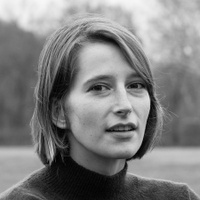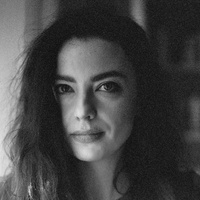On rethinking what it means to be creative
Prelude
Olivia Clear, MS (she/they) is a curious creative living in Grass Valley, California/ Nisenan Territory. She is fortunate to be called to help others uncover what’s alive within them through non-ordinary states of consciousness like psychedelic journeying, guided meditation, art-making, and other types of deep exploration. She supports her clients in connecting with their inner healers and working with their internal guidance to become more present in their consciousnesses. She has studied as an art therapist, artist, and energy worker. When she’s not working with others, she connects with her guides and makes poetry, collage, paintings, and jewelry.
Conversation
On rethinking what it means to be creative
Art therapist and artist Olivia Clear discusses the nature of creativity, the healing intelligence within all of us, and using art as a tool in therapy.
As told to Grashina Gabelmann, 2532 words.
Tags: Art, Therapy, Process, Mental health.
What does your practice as a creator and as an art therapist look like?
So, as a creative, I work with multiple types of media. Lately, I’ve been most into collage and lost wax casting jewelry. But I also just took a Raku ceramics class, I work with watercolors, intuitive painting, abstract kind of stuff…
As a professional, creativity is woven into the fabric of my work as a ketamine therapist, art therapist, and clinical counselor. Creativity is such a part of what really connects us to our aliveness and our humanness. There’s a drive within every person to connect to themself self as a creator.
And so, with my clients, we might explore images that come up during non-ordinary states of consciousness or dreams. They might do a process I call intuitive collage. They may draw, paint, sculpt. It really depends on what they resonate with and what materials they feel called to work with.
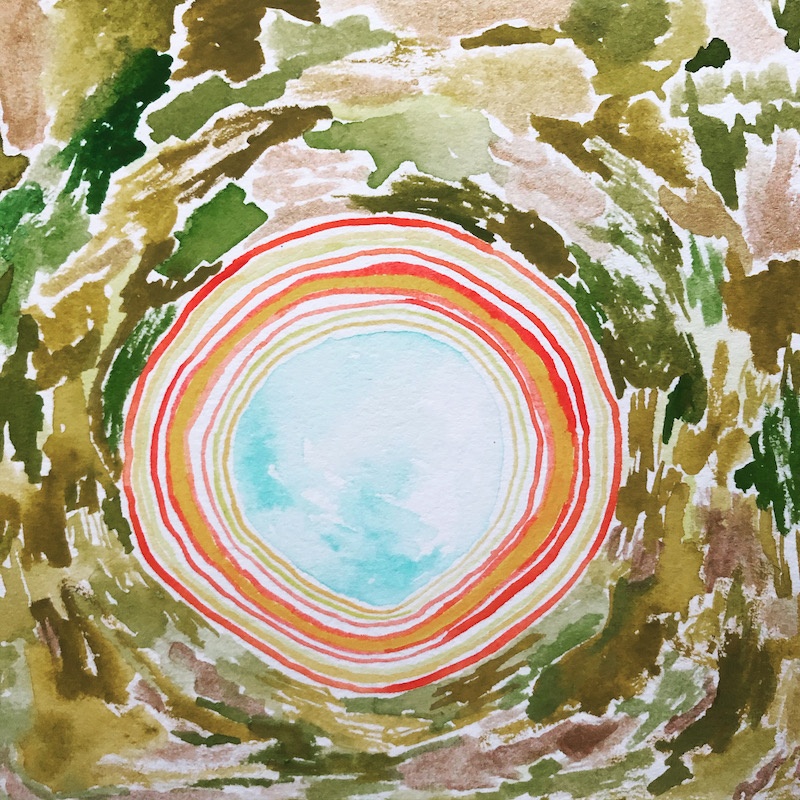
One question that pops up immediately, because you say that we all have this creativity in us, yet many people struggle to access that creativity or don’t see themselves as a creative being. Maybe someone told them they weren’t good at drawing when they were young or maybe we have unrealistic expectations of what a creative person should be able to do. Do you have clients who don’t think they are creative?
A lot of adults don’t think they’re creative. It’s a really sad thing. And many of us have some sort of messaging we got when we were younger from adults in our lives, from art teachers, from parents, people looking at our creations and trying to interpret them or put their own meaning onto them. You drew a dog and your mom thinks it’s a cat or whatever. We can really hold onto those messages for a really long time. And as we get older, a lot of times we’ll get ideas about what we want to make and how we want it to look. And most adults have the same sort of level of artistic abilities, unless they’ve gone through advanced training, as an 11 or 12 year old. Because a lot of times that’s when we stop focusing on art classes in our schools.
Oh, wow. I never thought of that.
Some people study art through high school but unless you practice, most of us have the drawing level of kids. And it’s really normal, but we feel like we should have these advanced level skills cause we’re adults, but how do we accumulate those skills? As kids, it comes really naturally, right? You’re probably practicing making art on a daily basis. And it’s very tied into the way you process and see the world for most kids. Creativity is encouraged in kids and in youth, but not as much as we get older. For some of my clients, it’s just connecting to their experiences. And sometimes that’s through visualization or through exploring dreams or exploring sensations in the body. So maybe it’s noticing a feeling and then talking about what that feeling looks like, if you were to imagine it to be in color shapes, lines forms. And sort of getting into a sculptural approach with what’s happening somatically.
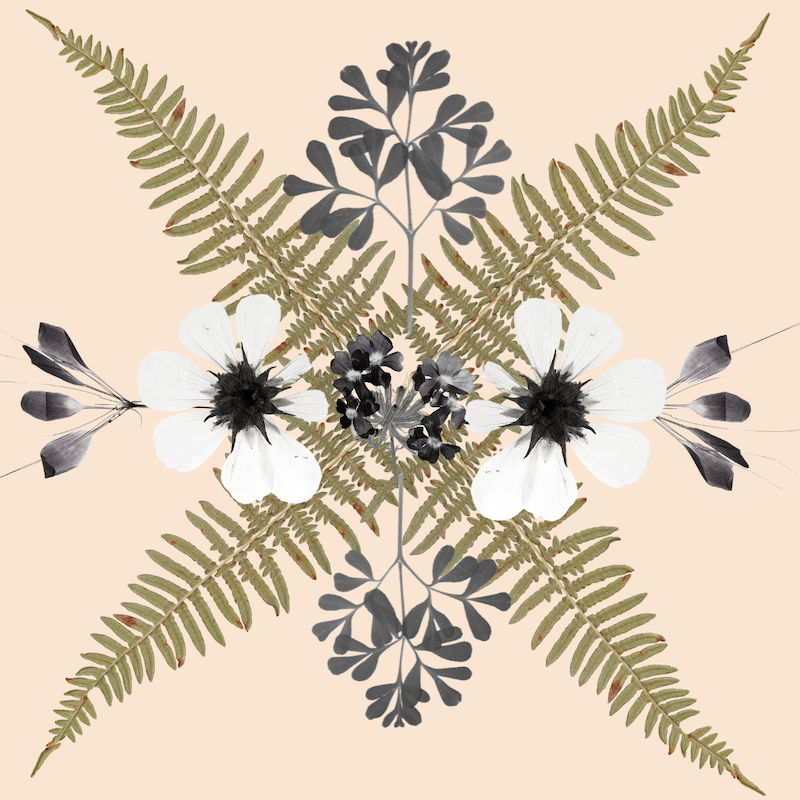
For those who are curious about art, I remind them we’re not here in this process to make beautiful images or masterpieces. We’re here for expression and we’re here for the process. And the product, while we can explore it and relate to it, everything that we need is going to be there, even if it doesn’t look the way that they want it to.
A lot of suffering in the creative process comes from having this very strict idea about how a thing has to be, and then measuring it the whole way along like, “It’s not there yet, but if I do this or that it’s going to fix it.” There’s so much pain and suffering that comes in these comparison points and really holding ourselves to these strict ideas about what we’re making and why. Versus really allowing ourselves to experience what wants to come through us. What wants to come out of us just as it is without judgment or without criticism or without shoulds or ideas about how things need to go. Then just receiving that expression. So a lot of times when I’m guiding people in a creative process, I begin with a meditation by asking them to drop into a part of the self that is potentially less judgemental and to work from sort of an intuitive place, if they can access it, where they don’t know what they’re going to make, they don’t know how it’s going to turn out, they’re just sort of feeling into like, “Oh, this color feels really good right now or loving that shape or that form.” Or by allowing themselves just to be with the materials with the process and not worry about how it’s going to end up.
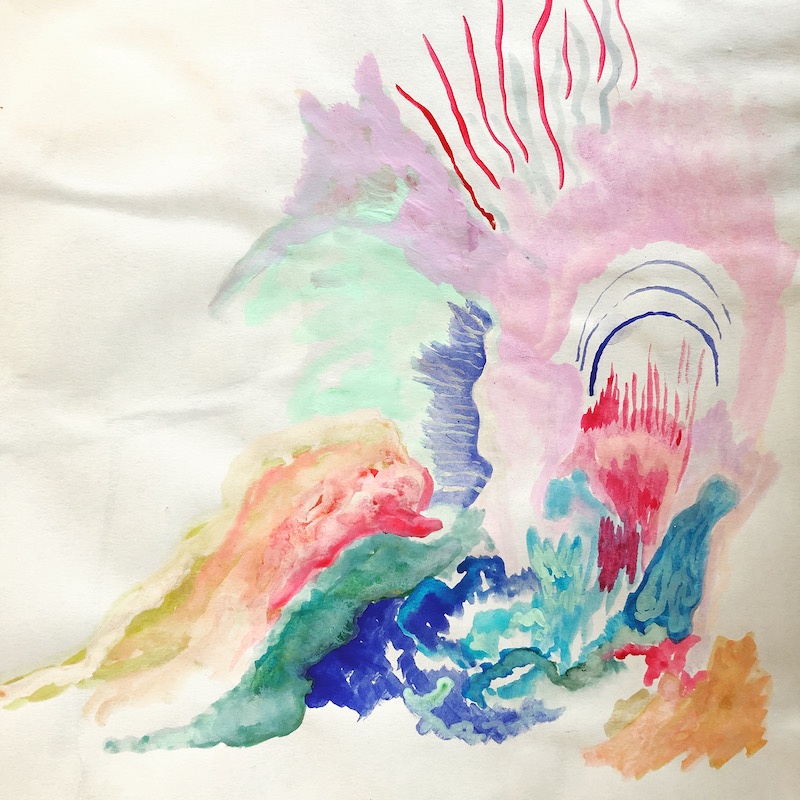
So you use meditation as a tool to assist your clients in getting what wants to get out to get out?
Sometimes it’s just a simple grounding meditation of just like, “Hey, let’s drop into the body. Let’s drop into being here. Let’s drop into a state of receptivity and explore what it feels like to just be present in this moment.” A lot of times that can allow people to go into more of a sense of flow when they’re coming from this more grounded present place, versus having all these anxieties about the future. Sometimes it’s a little deeper than that and more of an invitation to really allow the process to unfold organically and call in a lot of self-compassion. And a lot of, receptivity Whether it’s with psychedelics or with art, we’re receiving from the collective, from the world around us, from our deeper inner self and our guidance from the healing intelligence that lives in all of us.
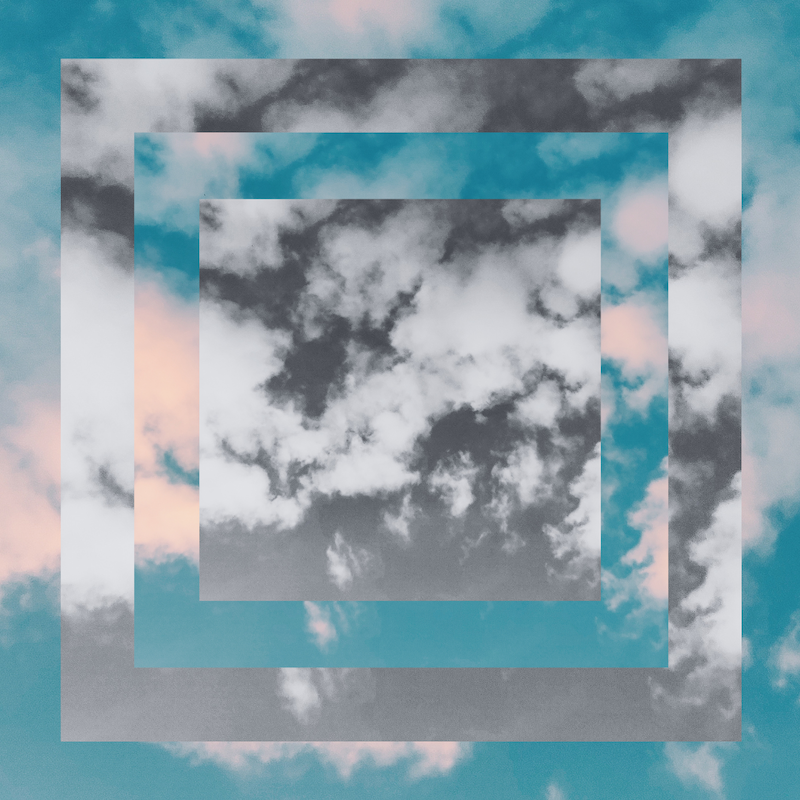
Is it part of the process to analyze with the client what they’ve made or is it more about just doing it and it doesn’t even matter so much what gets made in the end?
We relate to the images that we make. Sometimes I will tell clients, “If you do this process by yourself and you want to bring it to session afterward. Great. If not, that’s okay too. So you can have that one on one more private relationship with whatever you’ve made or we can talk about it if you’re up for it.”
And a lot of times it’s about receiving from the image. So looking at the image from a distance maybe. Talking about, to start, what was that process like? What came up for you? How did it feel to be in this process? When you look at this image, what comes up in your body? What does it feel like to look at these colors or these shapes or these forms? Or how does it feel to be in relationship to an image versus like, “Oh, what is this image? You drew mountain? What do mountains mean to you?” kind of thing.
What’s it like to work with clients who are trained to create products? Or who have a training in art making?
When you go to art school or you work as a creative, that’s your creative output into the world. And I think there’s even more of that process of self-evaluation throughout art therapy and evaluation of the product. Sometimes I’m like, “Go to a recycle bin, grab some random stuff and put it together. And that can be what you’re making for right now. And just know that it’s going to go right back into the recycle bin. Or make something out of twigs and sticks and things that will get sort of taken up by the earth again.”
Taking the pressure away to make something that has to last and be perfect…It can get complicated to remain playful once you start earning money with art.
I think creativity is energy that’s moving through us. And at times when we’re doing work that monetizes the flow of that energy, it can be hard to remember that there’s so much more of it that exists. I believe we can access infinite creative energy, if we’re not just accessing it from inside of ourselves. The universe is a creator, right. The world’s a creator, we’re all creators in the world and there’s kind of this flow within the collective consciousness of all of this creative content.
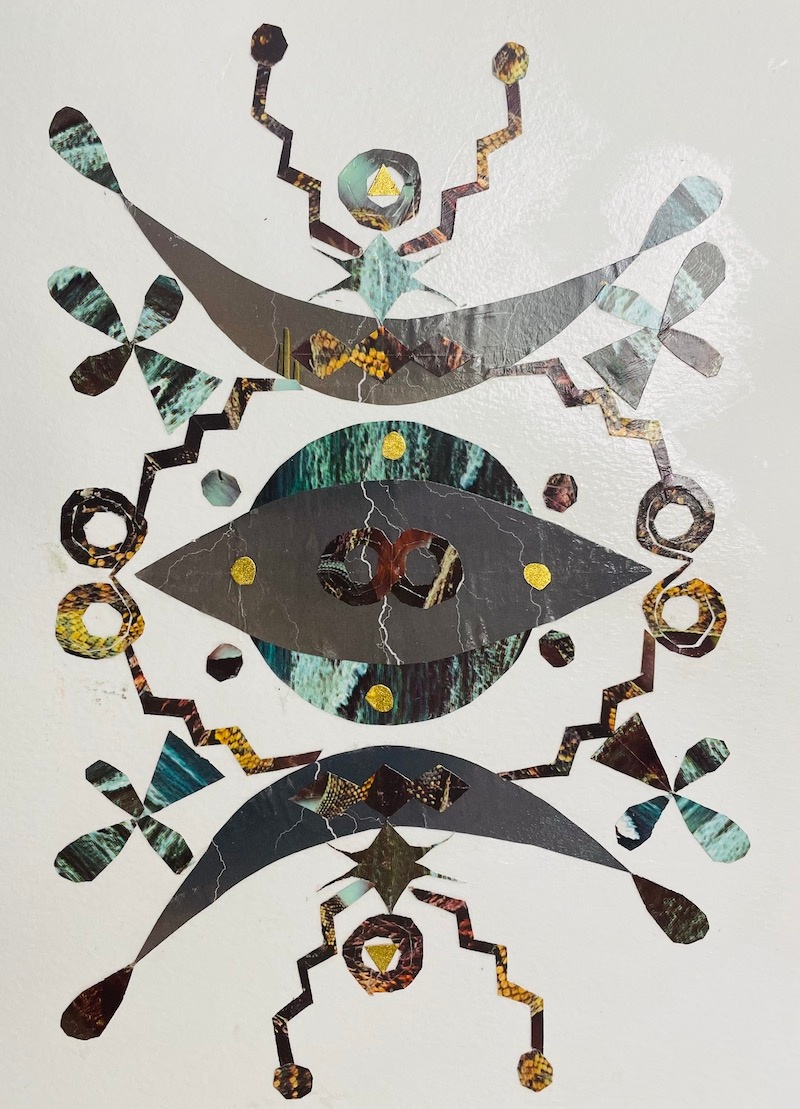
It can be difficult to remember that when that’s our jobs. So really stepping into something that is outside of that way we usually work. As well as working with things that exist in the world and relating to them. Like sculpture is a really great way to do that. Also making blackout poems where you grab a piece of text and you color over the different words in it and leave those negative space words to create poetry. Or create collages with images that are already out there. So just taking things that you’re already in relationship to and recalibrating them and changing them up and making them into something new. So it’s not just having to come from, “Oh, I’ve got this idea and I’m going to sit here with my blank canvas and my brushes and make a thing from my mind.”
It could be a bit more reassuring to work with something that’s already there.
It’s a collaboration with the world around us. I think we forget how many collaborations there can be. And we think we’re all alone in our creative process. The idea has to be wholly original and it has to come from me and come from my mind and then I have to make this out of nothing. That’s never the case, we’re always destroying something else to create something new. And we’re always in these relationships.
That’s a really beautiful way of looking at it. And to remind ourselves of that. Everything is connected to something else. You cannot have a wholly original idea unless you grew up in a cave on your own…and even then you’re relating to the cave.
You’re potentially relating to your ancestors, right? You’re relating to epigenetics. You’re relating to the way your brain developed and formed.
It’s beautiful to remember that we are never acting on our own and to look at collaborating in a different way. We’re not just collaborating with humans but with everything really.

That’s really important to remember. There can be something kind of isolating when you think everything has to come from within or else you’re not original or what you are making is not worthy.
I think it’s such a narrative about why we shouldn’t be creative. A way we sort of block ourselves and make it be more complicated than it should be, or it needs to be by using this frame, this narrative that really constricts us and constricts what we can do and gives us impossible tasks. So we have an excuse not to do it. We can just stay where we are. Not expand at all, you know?
Yeah. Exactly. It seems so impossible that you just might as well not even try. Whereas kids just do it for the sake of doing it.
And I think we can all find that capacity within us. Just doing it for the sake of doing. But there’s a lot that is in the way of that. There’s a lot that we have to adjust about our frame and the way we relate to and receive what’s around us and what’s within us and what’s outside of us and what we can take in.
I can paralyze my creation process by thinking “I don’t see the bigger purpose of this.” I think existing in a Western capitalistic society plays into that because we are groomed to be productive and do things that ‘make sense’.
It’s again because we’re looking with this very narrow narrative, right? It’s got to make sense cognitively… it’s got to make sense to the mind. But some part of your soul wants to express something. There’s a reason for that. There’s sense in just that. It’s not just this meaningless thing that you’re out outputting into the world that you have no connection to or no relationship to. Even if you can’t make meaning I would imagine there’s multiple other layers of meaning. You could be moving energy or you could be connecting to a somatic sensation. You could be connecting to the collective. There’s so many ways we just think about the meaning being something within our heads, versus, all the layers of connecting to the creative process and connecting to the work we make.
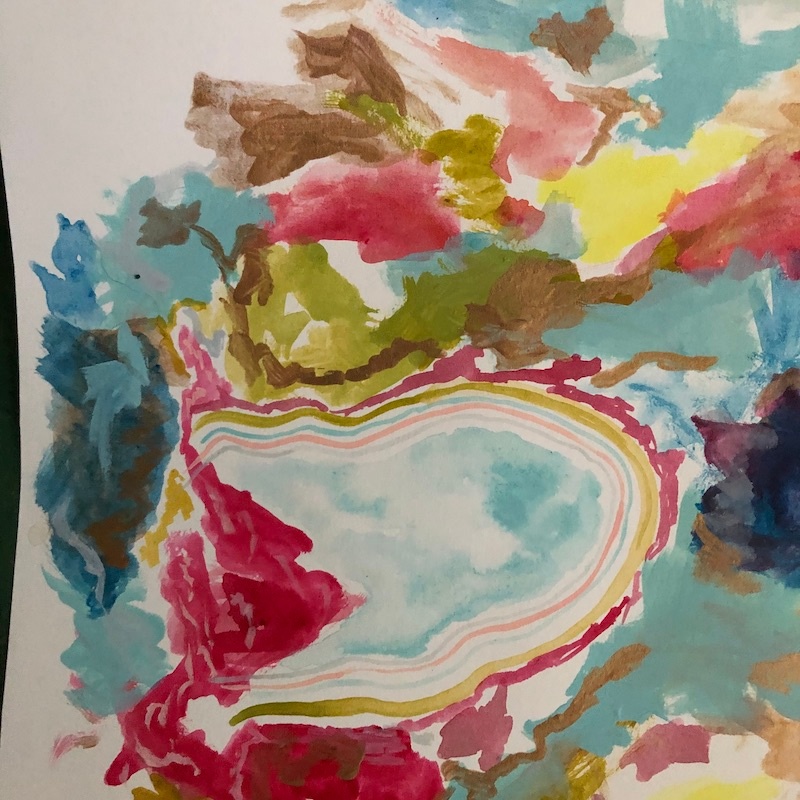
I think you’re absolutely right… the first thing that comes up for me is about capitalism and the way we’re so trained to be good little workers and put out things other people will use or need or can make our brains hurt because we’re thinking so hard about it. Whereas there’s so much less of an emphasis on, “Oh, go engage in a process that feeds your soul. That feels really good for you. That feels really affirming, that connects you to what’s alive within your soul and within your being.” That’s meaningful. And it’s ultimately also very good for society overall and a service to everyone but it doesn’t get seen that way. I think anytime we’re connecting to those more intuitive parts of ourselves or those parts of ourselves that allow us to feel free and alive and allow us to feel the richness of our human experience we’re shifting the consciousness of everybody. We’re actually doing healing work through creativity.
Olivia Clear Recommends:
A favorite for playful beauty
Seeking a little written magic
If you’re looking for more info about psychedelic therapy or to find a practitioner, this is a great resource
If you have to buy things…buy them used. Go to thrift stores, check out craigslist free, go to the library, join a local ‘buy nothing’ group, ask your friends if they have what you need…slow down your consumption and get creative with what is already available. Seek connection with friends and perhaps even strangers who are yet to become friends.
Keeping a box of costumes in your closet and opening it on a random Tuesday night to see what it feels like to incorporate more play into your life.
Prisms
Writing poetry and making collages after non-ordinary states of consciousness
- Name
- Olivia Clear
- Vocation
- art therapist and artist
Some Things
Pagination
